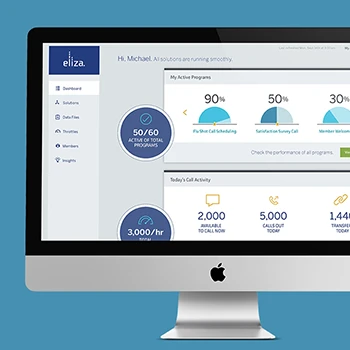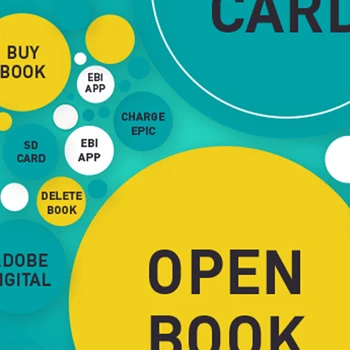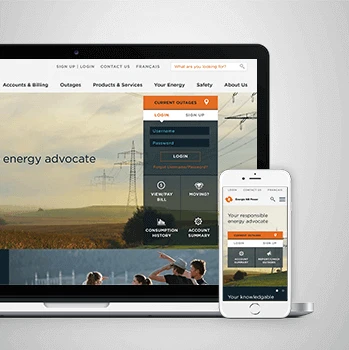What exactly are UX delivery pods and why do organizations choose this model?
UX delivery pods are dedicated, multi-faceted experience design teams that include UX research, design, content, and development capabilities working together to solve experience problems quickly. Organizations choose pods to procure complete UX capabilities faster than internal hiring while avoiding long-term commitments and headcount limitations. The pod model delivers successful outcomes through integrated expertise and collaborative execution.
Tip: Evaluate delivery pods based on team composition and collaborative track record rather than just individual skills to ensure the pod can deliver integrated solutions rather than disconnected deliverables.
How do delivery pods differ from traditional UX consulting approaches?
Traditional consulting often provides specialists for specific tasks or phases, while delivery pods offer complete, integrated experience creation capabilities. Pods work as dedicated units with consistent collaboration patterns, shared accountability, and end-to-end responsibility for experience outcomes. The approach emphasizes collaborative problem-solving and rapid iteration rather than sequential handoffs between specialists.
Tip: Choose delivery pods when you need integrated problem-solving rather than discrete expertise, especially for complex challenges requiring coordination across research, design, content, and development disciplines.
What types of experience problems are best suited for delivery pod approaches?
Delivery pods excel at product churn challenges, complex user journey optimization, integrated experience design across multiple touchpoints, and situations requiring rapid problem-solving with measurable outcomes. They work well for organizations needing both strategic thinking and tactical execution, particularly when internal resources lack capacity or specific expertise combinations required for success.
Tip: Assess whether your challenge requires integrated expertise across multiple disciplines rather than deep specialization in one area to determine if delivery pods provide the right capability mix for your needs.
What team composition and skills do delivery pods typically include?
Delivery pods integrate UX researchers, interaction and visual designers, content strategists, information architects, and front-end developers with collaborative working relationships and shared accountability for outcomes. The specific composition varies based on challenge requirements, but pods always include complementary skills that enable end-to-end experience creation without external dependencies.
Tip: Evaluate pod composition based on your specific challenge requirements rather than standard configurations to ensure the skill mix aligns with your project's unique needs and success criteria.
How do delivery pods integrate with existing organizational structures?
Delivery pods work alongside internal teams through collaborative partnership models that respect existing organizational dynamics while providing independent problem-solving capabilities. They establish clear communication channels, stakeholder interfaces, and decision-making frameworks that enhance rather than compete with internal resources. The approach emphasizes knowledge transfer and capability building within existing structures.
Tip: Plan integration points and communication protocols before pod engagement begins to ensure smooth collaboration and prevent territorial conflicts or role confusion with existing internal resources.
What experience thinking principles guide delivery pod approaches?
Delivery pods apply Experience Thinking frameworks that connect brand, content, product, and service experiences through systematic collaboration and shared accountability. The approach emphasizes user-centered problem-solving, evidence-based decision-making, and iterative improvement while maintaining focus on business outcomes and stakeholder value. Pods integrate all experience dimensions rather than treating them as separate concerns.
Tip: Ensure delivery pods understand your complete experience ecosystem rather than just the immediate problem area to create solutions that align with broader strategic objectives and experience consistency.
How do delivery pods balance speed with quality in experience delivery?
Delivery pods achieve speed through integrated expertise, established collaboration patterns, and systematic approaches to experience creation that eliminate handoff delays and miscommunication. Quality is maintained through proven methodologies, continuous user validation, and shared accountability for outcomes. The pod model enables rapid iteration while maintaining rigorous standards for user value and business impact.
Tip: Define quality criteria and success metrics upfront to ensure delivery pods understand how to balance speed requirements with quality standards rather than assuming they'll naturally optimize for both simultaneously.
What Design Track methodologies do delivery pods use for different project scopes?
Delivery pods use Design Steps (2-day intensive focus), Design Sprints (4-5 day structured exploration), Design Runs (3-4 week extended engagement), and Design Relays (12-week comprehensive programs) based on project complexity and scope requirements. Each methodology provides systematic approaches to discovery, design, and testing while scaling effort appropriately to challenge requirements and organizational constraints.
Tip: Match Design Track methodology to your actual project scope and timeline constraints rather than defaulting to familiar approaches to ensure the methodology supports rather than constrains your success objectives.
When should organizations choose Design Steps versus longer engagement models?
Design Steps work best for immediate design challenges, breaking through design stalls, quick strategic direction validation, or exploring specific problem areas without major resource commitment. They provide focused exploration and rapid results for teams needing momentum or clarity on particular design decisions while building confidence for larger initiatives.
Tip: Use Design Steps when you need to break through decision paralysis or explore specific opportunities rather than expecting them to solve comprehensive design challenges that require extended development and testing cycles.
How do Design Sprints work within delivery pod engagements?
Design Sprints provide structured 4-5 day approaches to exploring design ideas, testing concepts with users, and validating solutions before major resource investment. Delivery pods use Discover Sprints for user understanding, Design Sprints for solution development, and Test Sprints for user validation. The approach enables rapid experimentation while maintaining rigorous user feedback integration throughout development.
Tip: Plan Design Sprints when you need to test new ideas or validate major design decisions rather than using them for incremental improvements or detailed design development that requires extended iteration cycles.
What are Design Runs and when do delivery pods recommend this approach?
Design Runs combine multiple Sprints with 3-4 week extended periods for comprehensive experience development, including Discover Runs for deep user research, Design Runs for iterative solution development, and Test Runs for extensive user validation. This approach suits complex challenges requiring both strategic exploration and detailed execution within project milestone timeframes.
Tip: Choose Design Runs when your challenge requires both big-picture thinking and detailed execution rather than just exploration or just implementation to ensure comprehensive solution development and validation.
How do Design Relays work for large-scale experience transformation?
Design Relays sequence 3-4 Design Runs over 12-week periods to address complex, multi-faceted experience challenges requiring sustained focus and comprehensive solution development. The approach enables systematic progression through discovery, design, and validation while maintaining momentum and stakeholder engagement throughout extended development cycles. Relays suit major product launches, experience redesigns, or strategic initiatives.
Tip: Plan Design Relays when you have comprehensive experience challenges requiring systematic progression rather than just extended timelines to ensure the methodology supports genuine complexity rather than just project duration.
How do delivery pods adapt Design Track methodologies to specific organizational contexts?
Delivery pods customize Design Track approaches based on organizational culture, stakeholder preferences, resource constraints, and industry requirements while maintaining core methodology integrity. Adaptations include stakeholder involvement levels, deliverable formats, communication cadences, and validation approaches that respect organizational norms while delivering experience value.
Tip: Share detailed context about organizational culture, decision-making processes, and stakeholder preferences to enable methodology adaptation rather than expecting standard approaches to fit your unique organizational dynamics.
What planning and preparation do Design Track methodologies require?
Design Track planning includes stakeholder mapping, resource allocation, timeline development, success criteria definition, and logistics coordination for workshops, interviews, and testing activities. Delivery pods use Design on Track planning tools to explore different scenarios and help stakeholders understand effort implications for various approaches and scope decisions.
Tip: Invest adequate time in Design Track planning to ensure methodology selection and resource allocation align with actual project requirements rather than rushing into execution without proper preparation and stakeholder alignment.
How do delivery pods ensure effective collaboration across different disciplines?
Delivery pods establish shared working methods, communication protocols, decision-making frameworks, and accountability structures that enable seamless collaboration between researchers, designers, content strategists, and developers. The approach emphasizes collective problem-solving rather than sequential handoffs, with regular integration points and shared responsibility for experience outcomes.
Tip: Evaluate pod collaboration approaches based on their integration methods and shared accountability systems rather than just individual expertise to ensure effective cross-disciplinary teamwork and solution coherence.
What stakeholder engagement models do delivery pods use?
Delivery pods engage stakeholders through structured touchpoints, collaborative workshops, regular review sessions, and decision-making frameworks that maintain momentum while ensuring alignment and buy-in. The approach balances stakeholder input with pod autonomy, preventing both isolation and excessive interference while building organizational support for solutions.
Tip: Define stakeholder roles and engagement expectations clearly at the beginning rather than assuming natural collaboration patterns will emerge to prevent miscommunication and maintain productive working relationships throughout the engagement.
How do delivery pods integrate user research throughout the design process?
Delivery pods embed continuous user validation through contextual interviews, prototype testing, usability studies, and feedback integration at every development stage. Research informs design decisions immediately rather than being separate activities, ensuring user needs remain central while maintaining development momentum and quality standards throughout the process.
Tip: Plan user research integration from the beginning rather than treating it as separate validation activities to ensure research insights inform design decisions immediately and effectively throughout development rather than just at predetermined checkpoints.
What quality assurance and design consistency methods do delivery pods employ?
Delivery pods maintain quality through continuous design reviews, cross-disciplinary feedback, systematic testing protocols, and shared quality standards that prevent design drift and ensure solution coherence. The approach includes regular check-ins, peer reviews, and stakeholder validation to catch quality issues early while maintaining development pace.
Tip: Establish quality criteria and review processes that integrate with pod workflows rather than creating separate quality control activities that slow development momentum or create additional overhead without proportional value.
How do delivery pods handle scope changes and evolving requirements?
Delivery pods manage scope through iterative development, regular stakeholder communication, impact assessment frameworks, and adaptive planning that accommodates learning and changing priorities while maintaining project viability. The approach emphasizes transparent communication about scope implications and collaborative decision-making about priority adjustments.
Tip: Plan scope management processes that balance flexibility with accountability to enable appropriate adaptation without compromising project success or creating unrealistic expectations about unlimited scope expansion.
What communication and reporting frameworks do delivery pods establish?
Delivery pods create regular communication cadences, progress reporting systems, milestone documentation, and stakeholder updates that maintain transparency while preventing excessive overhead. Communication includes work-in-progress sharing, decision documentation, and outcome measurement that keeps stakeholders informed without disrupting pod productivity.
Tip: Define communication expectations that provide adequate transparency without creating reporting overhead that reduces pod effectiveness or development momentum rather than assuming standard reporting approaches will meet your specific organizational needs.
How do delivery pods ensure knowledge transfer and organizational learning?
Delivery pods embed knowledge transfer through collaborative working, documentation practices, capability building activities, and systematic handoff processes that build internal organizational capacity alongside solution delivery. The approach ensures organizations gain both specific solutions and enhanced capabilities for continued experience development.
Tip: Plan knowledge transfer activities throughout the engagement rather than only at the end to ensure learning happens progressively and internal capabilities develop alongside solution creation rather than requiring separate training initiatives.
How do delivery pods integrate with agile development environments?
Delivery pods adapt to agile cycles through sprint integration, iterative delivery, continuous user feedback, and flexible planning that aligns UX work with development rhythms while maintaining design quality and user-centered decision-making. The approach includes design specifications, pattern libraries, and ongoing design support that enables agile development without compromising experience quality.
Tip: Ensure delivery pods understand your specific agile practices and constraints to enable integration that supports rather than disrupts existing development workflows while maintaining UX quality standards.
What design specifications and handoff processes do delivery pods provide?
Delivery pods create detailed design specifications, annotated wireframes, pattern libraries, and style guides that enable development teams to implement designs accurately while understanding user experience intent. The approach includes ongoing design support, review processes, and iteration support to prevent design drift and maintain quality throughout development.
Tip: Define specification requirements and handoff processes that match your development team's needs and capabilities rather than assuming standard deliverables will provide adequate guidance for accurate implementation.
How do delivery pods support continuous testing and iteration?
Delivery pods enable continuous testing through lightweight prototyping, regular user validation, feedback integration, and iterative improvement cycles that align with agile development practices. The approach includes both planned testing activities and responsive validation that addresses emerging questions and opportunities throughout development.
Tip: Plan testing integration that can adapt to development discoveries and changing priorities rather than rigid testing schedules that may not address the most important validation questions as they emerge during development.
What role do delivery pods play in sprint planning and backlog management?
Delivery pods contribute user experience perspectives to sprint planning through story development, acceptance criteria definition, design debt identification, and user impact assessment that helps prioritize development work based on experience value. The approach ensures UX considerations influence development decisions while respecting agile prioritization processes.
Tip: Include delivery pods in sprint planning and backlog management activities to ensure user experience perspectives inform development priorities rather than treating UX input as separate from agile planning processes.
How do delivery pods prevent design drift during agile development?
Delivery pods prevent design drift through regular design reviews, developer collaboration, implementation support, and quality monitoring that catches deviations early while understanding development constraints. The approach includes responsive design adjustment and problem-solving that maintains experience quality while accommodating technical realities and timeline pressures.
Tip: Establish design review checkpoints integrated with development cycles rather than end-of-sprint reviews to catch design drift early when corrections are easier and less costly to implement.
What experience support do delivery pods provide throughout development cycles?
Delivery pods provide ongoing design clarification, additional asset creation, interaction refinement, and quality assurance support throughout development cycles. The approach includes responsive problem-solving, design system maintenance, and user testing support that enables development teams to maintain experience quality while meeting delivery commitments.
Tip: Plan ongoing design support capacity rather than assuming initial specifications will address all development questions to ensure experience quality is maintained throughout implementation without causing development delays.
How do delivery pods measure and optimize experience outcomes in agile environments?
Delivery pods establish experience metrics, user feedback collection, performance monitoring, and optimization frameworks that provide ongoing insight into experience quality and user satisfaction throughout agile development. The approach includes both quantitative measurement and qualitative validation that inform continued improvement and prioritization decisions.
Tip: Establish experience measurement that can inform agile prioritization decisions rather than just providing post-launch evaluation to ensure user experience insights influence development direction continuously rather than only retrospectively.
What business outcomes can organizations expect from delivery pod investments?
Delivery pod investments typically deliver reduced product churn, improved user satisfaction, faster time-to-market, decreased development rework, and stronger competitive positioning through superior experience quality. Organizations also gain access to integrated expertise faster than internal hiring while building internal capabilities through collaborative working and knowledge transfer activities.
Tip: Establish baseline measurements for user satisfaction, churn rates, and development efficiency before pod engagement to accurately measure business impact and return on investment throughout and after the engagement.
How do delivery pods impact product development timelines and efficiency?
Delivery pods accelerate development through integrated problem-solving, reduced iteration cycles, improved design-development coordination, and early user validation that prevents costly late-stage changes. The approach typically reduces overall project timelines while improving final product quality through systematic user-centered development and continuous validation.
Tip: Track development cycle metrics including iteration frequency, rework rates, and stakeholder approval times to measure efficiency improvements beyond just final delivery dates and overall project completion timelines.
What competitive advantages result from delivery pod engagements?
Competitive advantages include faster innovation cycles, superior user experiences, improved market responsiveness, and enhanced customer loyalty through consistent experience quality. Organizations gain capabilities to anticipate user needs, respond to market changes, and deliver differentiated experiences that competitors with less integrated approaches struggle to match.
Tip: Conduct competitive experience analysis to identify specific differentiation opportunities where delivery pod capabilities can create sustainable advantages that are difficult for competitors to replicate quickly.
How do delivery pods affect customer satisfaction and retention metrics?
Delivery pods typically improve customer satisfaction scores, reduce support ticket volume, increase user engagement, and enhance customer lifetime value through systematic user-centered design and continuous validation. The integrated approach creates more coherent, valuable experiences that build stronger customer relationships and loyalty over time.
Tip: Connect delivery pod improvements to customer behavior metrics and retention rates rather than just satisfaction scores to understand total business impact and demonstrate value to stakeholders focused on growth and profitability.
What cost savings and efficiency gains do delivery pods typically provide?
Cost savings include reduced hiring time, decreased training overhead, lower development rework costs, improved team productivity, and faster problem resolution through integrated expertise. Delivery pods eliminate recruitment delays while providing immediate access to coordinated capabilities that would take months to assemble and integrate internally.
Tip: Calculate both direct cost savings from avoiding recruitment and indirect benefits from faster problem resolution to understand total financial impact rather than focusing only on immediate consulting costs versus hiring expenses.
How do we measure and communicate delivery pod ROI to executive stakeholders?
ROI measurement includes development efficiency gains, quality improvement indicators, market responsiveness enhancements, and capability development benefits that create lasting organizational value. Delivery pods establish measurement frameworks that connect experience improvements to business results while building internal capabilities for continued success.
Tip: Present delivery pod value in terms of strategic capability development and competitive advantage rather than just project delivery to align with executive priorities for long-term organizational success and growth.
What long-term organizational benefits result from delivery pod partnerships?
Long-term benefits include enhanced internal UX capabilities, improved cross-functional collaboration, systematic approaches to experience challenges, and organizational learning about user-centered development. The investment creates lasting organizational transformation through capability building, process improvement, and cultural development around experience quality.
Tip: Plan capability development and organizational learning measurement to understand long-term investment returns beyond immediate project outcomes, focusing on enhanced organizational capabilities and improved experience development processes.
How do we determine if delivery pods are the right solution for our organization?
Delivery pods work best when organizations have clear experience challenges, capacity constraints, timeline pressures, or need integrated expertise they cannot quickly assemble internally. The model suits organizations wanting proven methodologies, collaborative problem-solving, and knowledge transfer alongside solution delivery. Consider pods when internal resources lack specific capability combinations or bandwidth for complex challenges.
Tip: Assess whether your challenge requires integrated multi-disciplinary expertise rather than deep single-discipline specialization to determine if delivery pods provide the right capability mix for your specific needs and constraints.
What preparation and organizational readiness do delivery pod engagements require?
Successful delivery pod engagements require stakeholder commitment, resource allocation, decision-making authority, and organizational support for collaborative working approaches. Preparation includes challenge definition, success criteria establishment, stakeholder mapping, and logistics coordination for workshops, research activities, and regular collaboration sessions.
Tip: Conduct honest organizational readiness assessment including stakeholder availability, decision-making processes, and change tolerance to ensure your organization can effectively collaborate with and benefit from delivery pod approaches.
How do we select the right delivery pod composition for our specific needs?
Pod composition selection considers challenge complexity, required expertise areas, organizational context, timeline constraints, and desired outcomes. The process includes needs assessment, skill requirement mapping, collaboration preference evaluation, and success criteria alignment to ensure pod capabilities match project requirements and organizational expectations.
Tip: Define specific challenge requirements and success criteria before evaluating pod compositions rather than selecting based on general expertise areas to ensure capability alignment with actual project needs and success requirements.
What engagement models and timeline options do delivery pods offer?
Delivery pods offer flexible engagement models from short-term Design Steps through comprehensive Design Relays, with options for part-time collaboration, intensive periods, or sustained partnership based on organizational needs and challenge requirements. Timeline flexibility accommodates organizational constraints while maintaining methodology integrity and outcome quality.
Tip: Match engagement models to actual organizational capacity and change tolerance rather than ideal timelines to ensure sustainable collaboration and realistic success expectations throughout the engagement period.
How do delivery pods handle intellectual property and confidentiality requirements?
Delivery pods establish clear intellectual property frameworks, confidentiality agreements, and data protection protocols that respect organizational security requirements while enabling effective collaboration. The approach includes appropriate legal structures, access controls, and information management practices that protect sensitive information while supporting productive working relationships.
Tip: Address intellectual property and confidentiality requirements early in pod selection rather than during contracting to ensure compatibility and prevent delays or complications in establishing effective working relationships.
What success criteria and measurement frameworks should we establish?
Success measurement includes both immediate deliverable quality and longer-term business impact indicators such as user satisfaction, development efficiency, market response, and organizational capability development. Frameworks encompass quantitative metrics and qualitative outcomes that demonstrate value across different stakeholder perspectives and organizational priorities.
Tip: Establish success criteria that balance immediate project outcomes with longer-term organizational benefits to ensure delivery pod value measurement reflects both solution quality and capability development impact.
How does AI impact delivery pods and what should organizations expect?
AI enhances delivery pod capabilities through accelerated research analysis, design exploration, content generation, and pattern recognition while strategic thinking, user empathy, and complex problem-solving remain fundamentally human capabilities. Delivery pods integrate AI tools to improve efficiency and expand exploration capabilities while maintaining human-centered decision-making and creative problem-solving that drive experience innovation.
Tip: Focus on delivery pods that use AI to augment human capabilities in research analysis and design exploration rather than replacing strategic thinking and user empathy to ensure technology enhances rather than diminishes experience quality and innovation.












